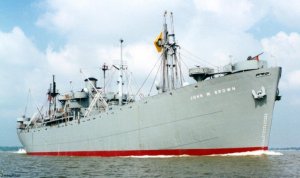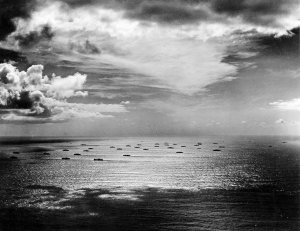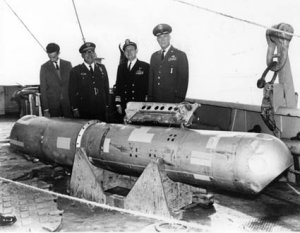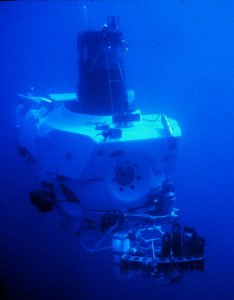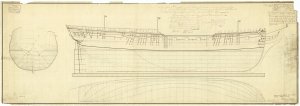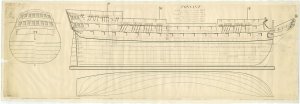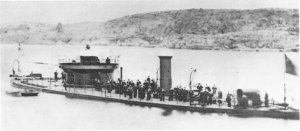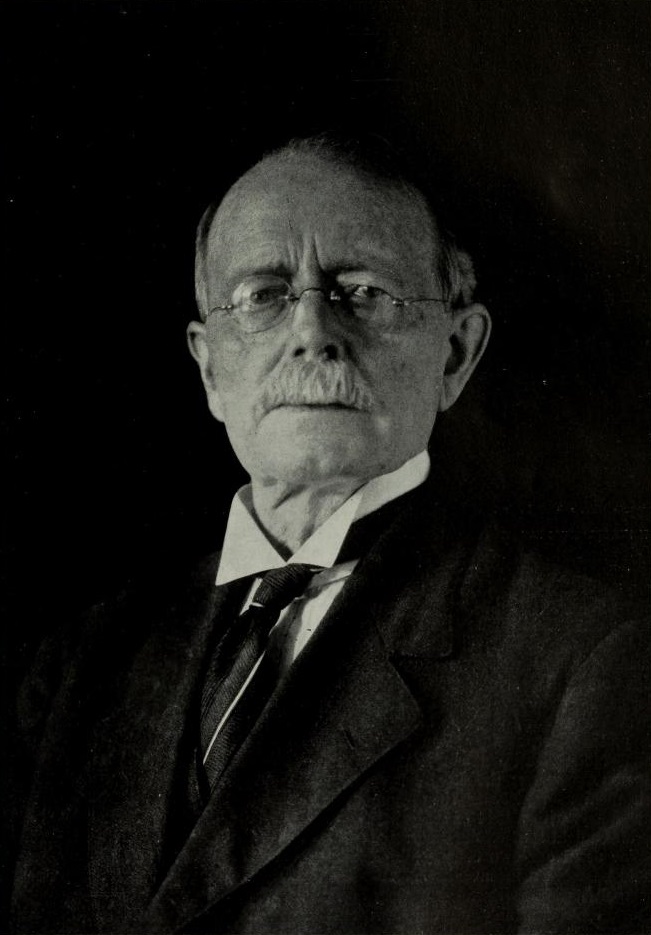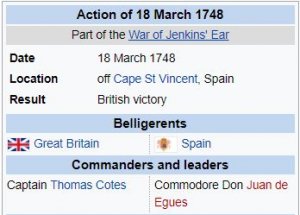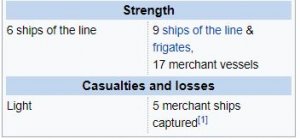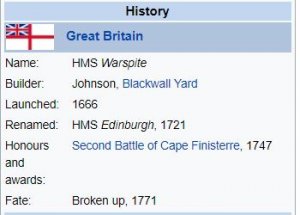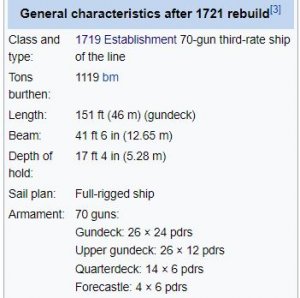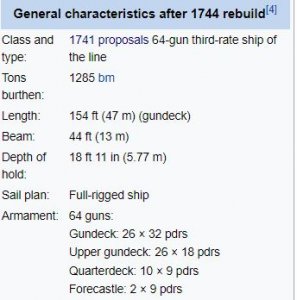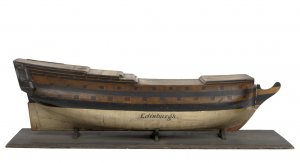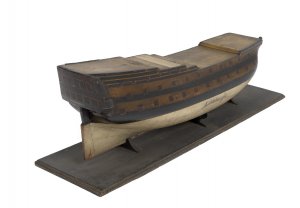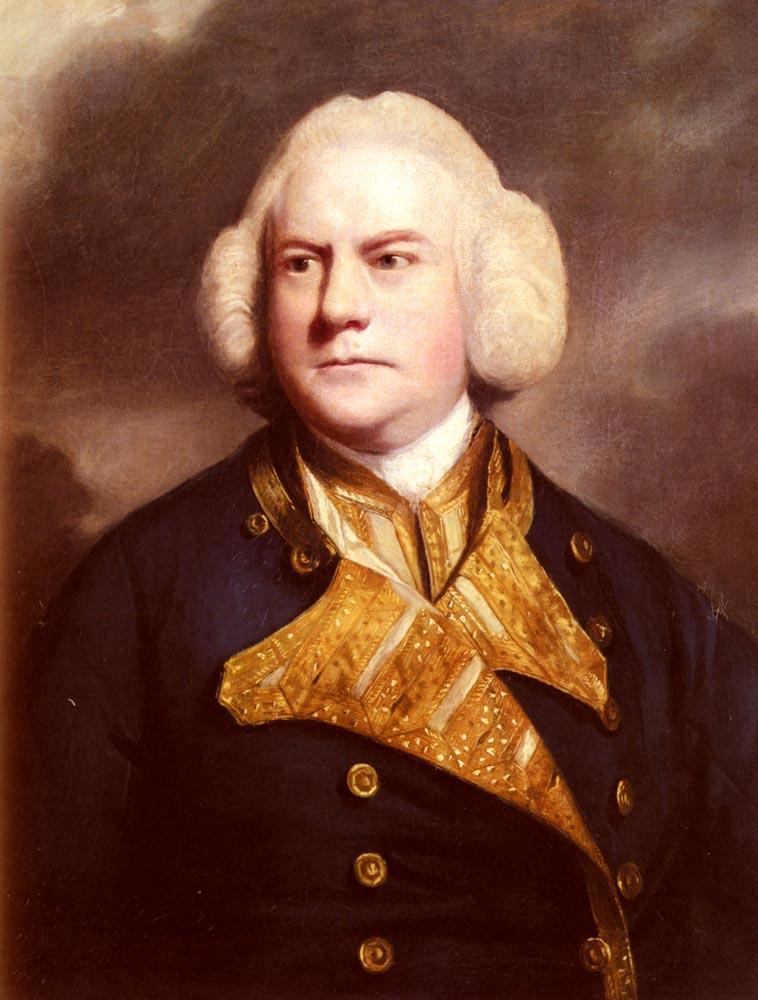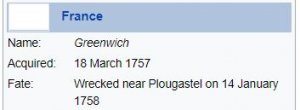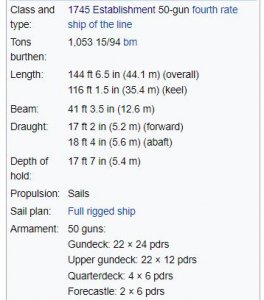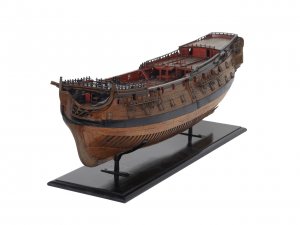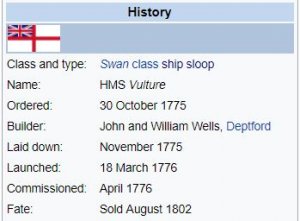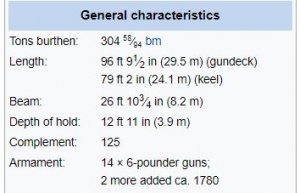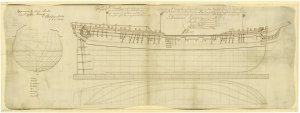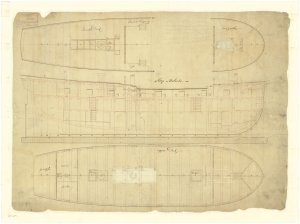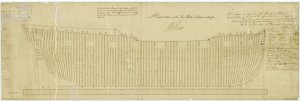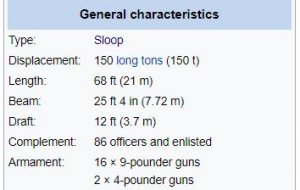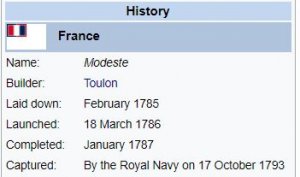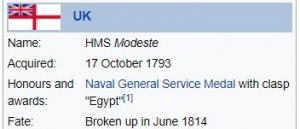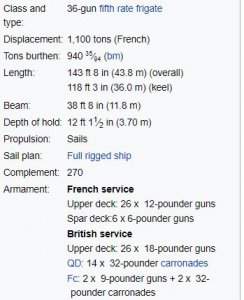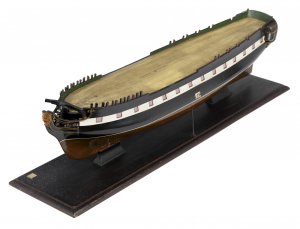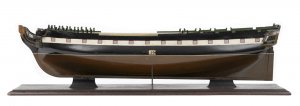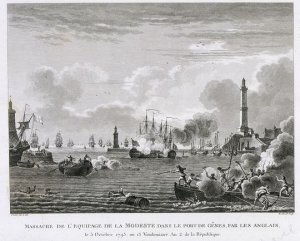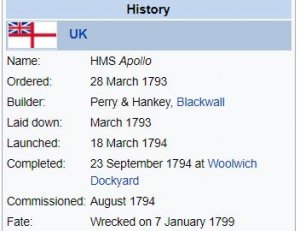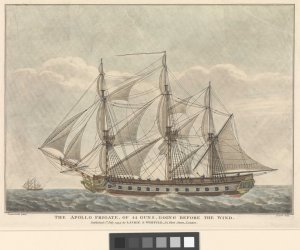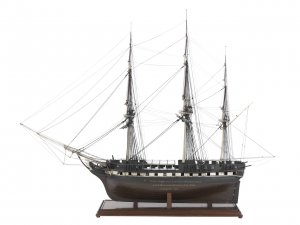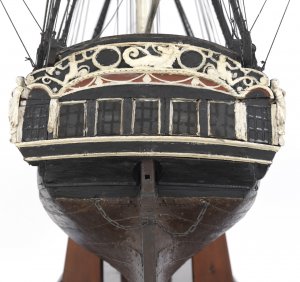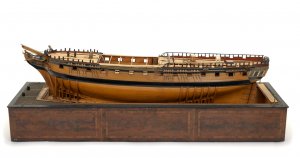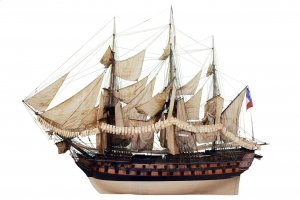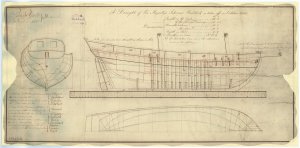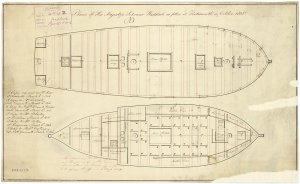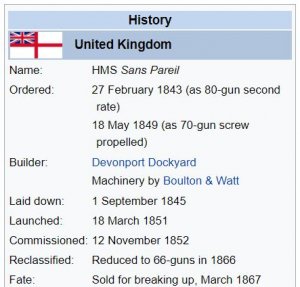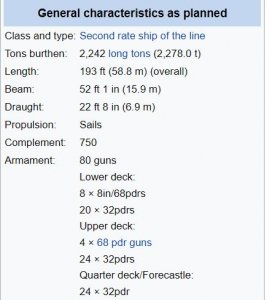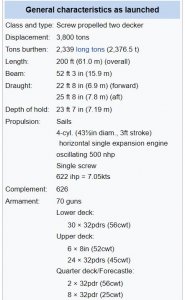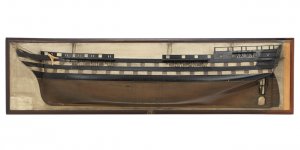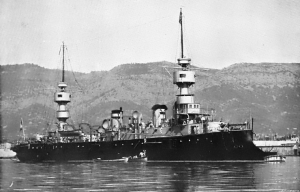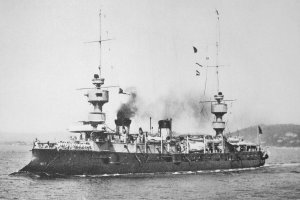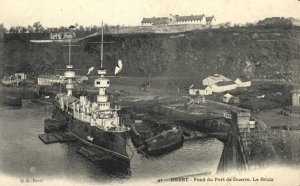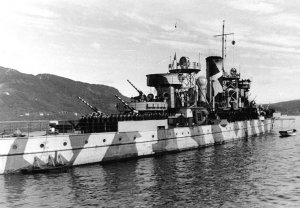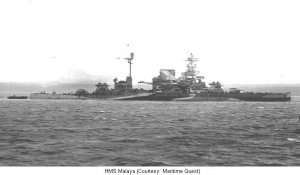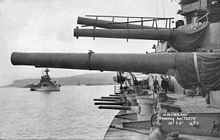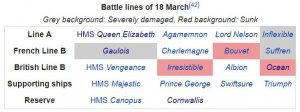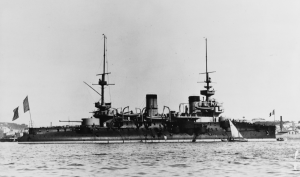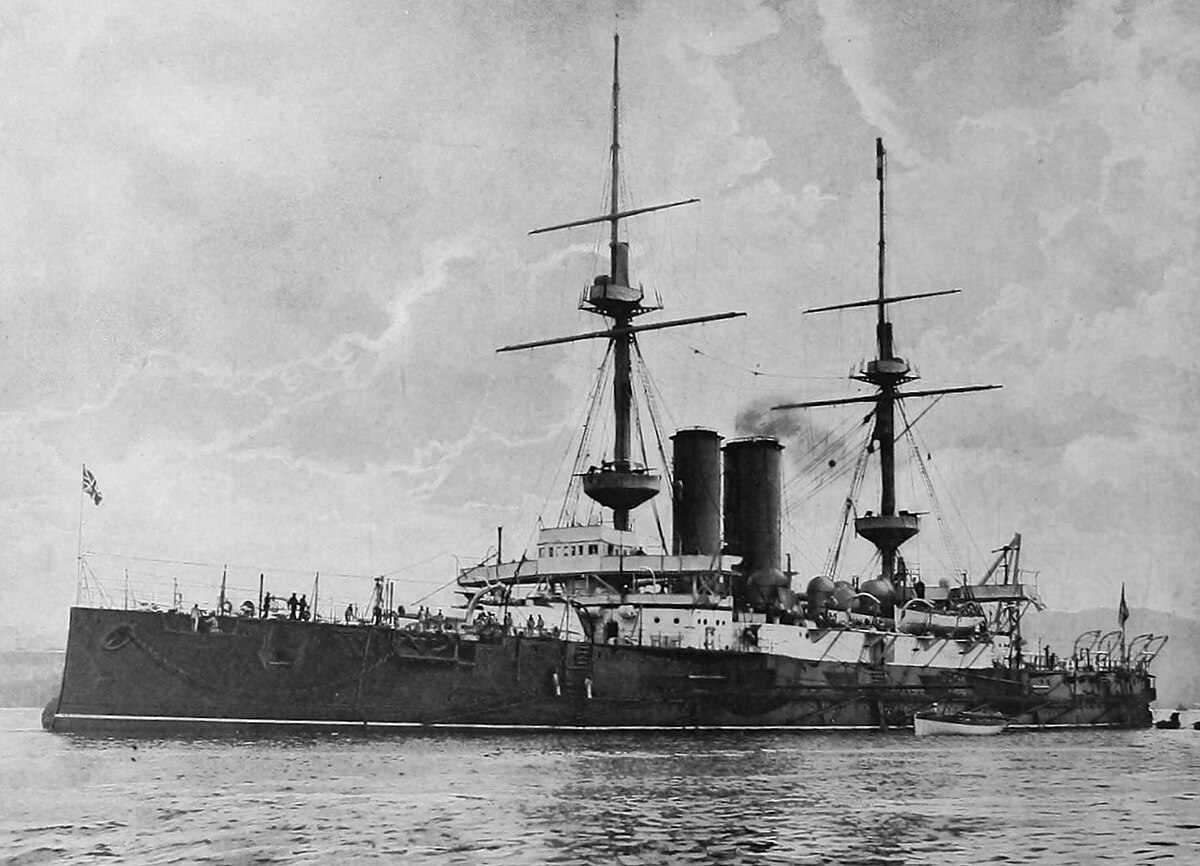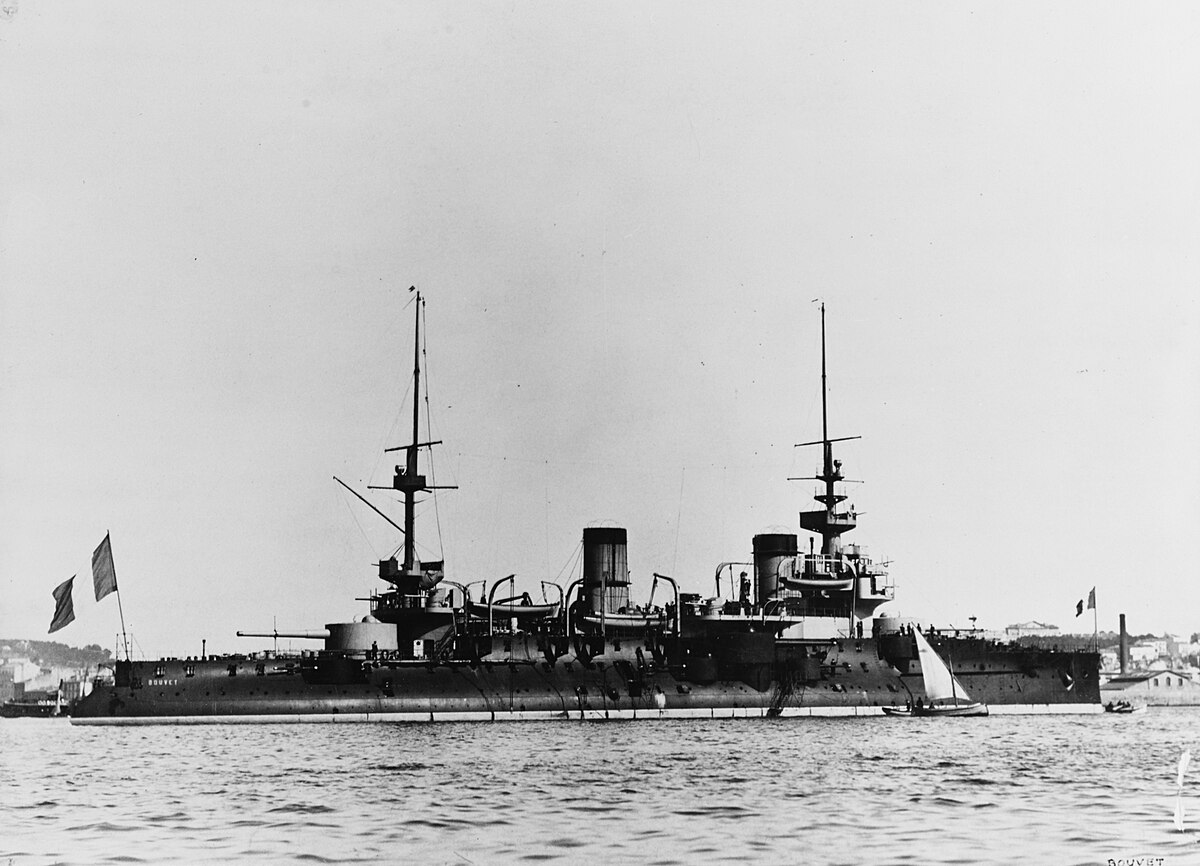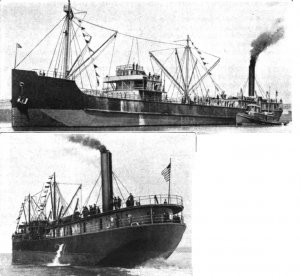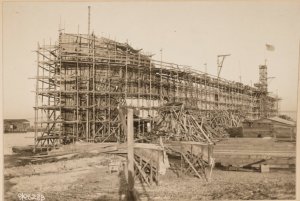Today in Naval History - Naval / Maritime Events in History
17 March 1938 – Launch of HMS Belfast, a Town-class light cruiser that was built for the Royal Navy.
HMS Belfast is a Town-class light cruiser that was built for the Royal Navy. She is now permanently moored as a museum ship on the River Thames in London and is operated by the Imperial War Museum.

HMS Belfast at her London berth, painted in Admiralty pattern Disruptive Camouflage
Construction of Belfast, the first ship in the Royal Navy to be named after the capital city of Northern Ireland and one of ten Town-class cruisers, began in December 1936. She was launched on St Patrick's Day 1938. Commissioned in early August 1939 shortly before the outbreak of the Second World War, Belfast was initially part of the British naval blockade against Germany. In November 1939, Belfast struck a German mine and, in spite of fears that she would be scrapped, spent more than two years undergoing extensive repairs. Belfast returned to action in November 1942 with improved firepower, radar equipment, and armour. Belfast saw action escorting Arctic convoys to the Soviet Union during 1943 and in December 1943 played an important role in the Battle of North Cape, assisting in the destruction of the German warship Scharnhorst. In June 1944, Belfast took part in Operation Overlord supporting the Normandy landings. In June 1945, Belfast was redeployed to the Far East to join the British Pacific Fleet, arriving shortly before the end of the Second World War. Belfast saw further combat action in 1950–52 during the Korean War and underwent an extensive modernisation between 1956 and 1959. A number of further overseas commissions followed before Belfast entered reserve in 1963.
In 1967, efforts were initiated to avert Belfast's expected scrapping and to preserve her as a museum ship. A joint committee of the Imperial War Museum, the National Maritime Museum, and the Ministry of Defence was established and then reported in June 1968 that preservation was practical. In 1971, the government decided against preservation, prompting the formation of the private HMS Belfast Trust to campaign for her preservation. The efforts of the Trust were successful, and the government transferred the ship to the Trust in July 1971. Brought to London, she was moored on the River Thames near Tower Bridge in the Pool of London. Opened to the public in October 1971, Belfast became a branch of the Imperial War Museum in 1978. A popular tourist attraction, Belfast receives over a quarter of a million visitors per year.[8] As a branch of a national museum and part of the National Historic Fleet, Belfast is supported by the Department for Culture, Media and Sport, admissions income, and the museum's commercial activities.
Design

Shells in a rack in the underwater magazine serving the "A" turret of Belfast.
Belfast is a cruiser of the third Town class. The Town class had originated in 1933 as the Admiralty's response to the Imperial Japanese Navy's Mogami-class cruiser, an 11,200-ton cruiser mounting fifteen 6-inch (152 mm) guns with a top speed exceeding 35 knots (65 km/h; 40 mph). The Admiralty's requirement called for a 9,000-ton cruiser, sufficiently armoured to withstand a direct hit from an 8-inch (203 mm) shell, capable of 32 knots (59 km/h) and mounting twelve 6-inch guns. Seaplanes carried aboard would enable shipping lanes to be patrolled over a wide area, and the class was also to be capable of its own anti-aircraft defence. Under the Director of Naval Construction the new design evolved during 1933. The lead ship of the new class, the 9,100-ton HMS Southampton, and her sister HMS Newcastle, were ordered under the 1933 estimates. Three more cruisers were built to this design, with a further three ships built to a slightly larger 9,400-ton design in 1935–36. By 1935, however, the Admiralty was keen to improve the firepower of these cruisers to match the firepower of the Japanese Mogami and American Brooklyn-class cruisers; both were armed with fifteen 6-inch guns. The Admiralty rejected a design featuring five triple turrets as impractical, while an alternative design fitting four quadruple turrets was rejected as an effective quadruple turret could not be developed. In May 1936 the Admiralty decided to fit triple turrets, whose improved design would permit an increase in deck armour. This modified design became the 10,000-ton Edinburgh subclass, named after Belfast's sister ship HMS Edinburgh. Belfast was ordered from Harland and Wolff on 21 September 1936, and her keel laid on 10 December 1936. Her expected cost was £2,141,514; of which the guns cost £75,000 and the aircraft (two Supermarine Walruses) £66,500. She was launched on Saint Patrick's Day, 17 March 1938, by Anne Chamberlain, the wife of Prime Minister Neville Chamberlain. The launch was filmed by Pathe . From March to August 1939, Belfast was fitted out and underwent sea trials.
. From March to August 1939, Belfast was fitted out and underwent sea trials.
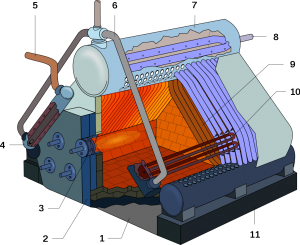
Diagram of one of Belfast's boilers.
When completed, Belfast had an overall length of 613 feet 6 inches (187.0 m), a beam of 63 feet 4 inches (19.3 m) and a draught of 17 feet 3 inches (5.3 m). Her standard displacement during her sea trials was 10,420 long tons (10,590 t).[4] She was propelled by four three-drum oil-fired Admiralty water-tube boilers, turning Parsons geared steam turbines, driving four propeller shafts. She was capable of 32.5 knots (60.2 km/h; 37.4 mph) and carried 2,400 long tons (2,400 t) of fuel oil. This gave her a maximum range of 8,664 nautical miles (16,046 km; 9,970 mi) at 13 knots (24 km/h; 15 mph).
Belfast's main armament comprised twelve Mk XXIII 6-inch guns in four triple turrets. With a rate of fire of up to eight rounds per gun per minute, her main battery was capable of a total maximum rate of fire of 96 rounds per minute. Her secondary armament comprised twelve 4-inch guns in six twin mounts. Her initial close-range anti-aircraft armament was sixteen 2-pounder "pom-pom" guns in two eight-barrel mountings, and two quadruple Vickers .50 machine guns. She also mounted six Mk IV 21-inch torpedo tubes in two triple mounts, and fifteen Mk VII depth charges.
Belfast was protected by a 4.5-inch (114 mm) main armour belt, with deck armour of 3 inches (76 mm) over her magazines, and 2 inches (51 mm) over her machinery spaces. Her six-inch turrets were protected by up to 4 inches (102 mm) of armour.

One of Belfast's Supermarine Walrus aircraft, photographed in an Icelandic fjord, 1942–1943.
Belfast's aviation capability was provided by two catapult-launched Supermarine Walrus amphibious biplanes. These could be launched from a D1H catapult mounted aft of the forward superstructure, and recovered from the water by two cranes mounted on either side of the forward funnel. The aircraft, operated by the Fleet Air Arm's HMS Belfast Flight of 700 Naval Air Squadron, were stowed in two hangars in the forward superstructure.
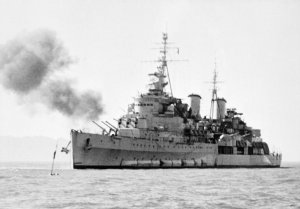
HMS Belfast at her London berth, painted in Admiralty pattern Disruptive Camouflage
https://en.wikipedia.org/wiki/HMS_Belfast_(C35)
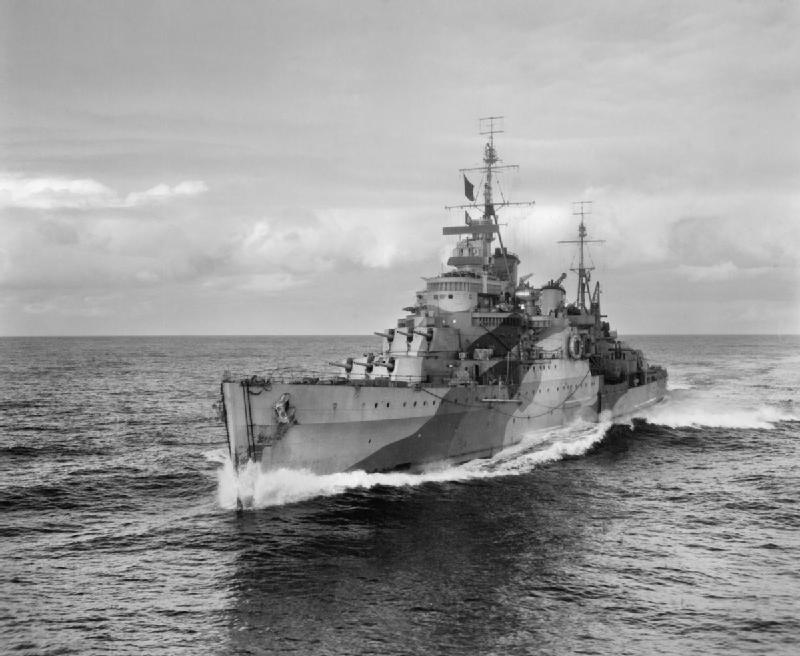
 en.wikipedia.org
en.wikipedia.org
17 March 1938 – Launch of HMS Belfast, a Town-class light cruiser that was built for the Royal Navy.
HMS Belfast is a Town-class light cruiser that was built for the Royal Navy. She is now permanently moored as a museum ship on the River Thames in London and is operated by the Imperial War Museum.

HMS Belfast at her London berth, painted in Admiralty pattern Disruptive Camouflage
Construction of Belfast, the first ship in the Royal Navy to be named after the capital city of Northern Ireland and one of ten Town-class cruisers, began in December 1936. She was launched on St Patrick's Day 1938. Commissioned in early August 1939 shortly before the outbreak of the Second World War, Belfast was initially part of the British naval blockade against Germany. In November 1939, Belfast struck a German mine and, in spite of fears that she would be scrapped, spent more than two years undergoing extensive repairs. Belfast returned to action in November 1942 with improved firepower, radar equipment, and armour. Belfast saw action escorting Arctic convoys to the Soviet Union during 1943 and in December 1943 played an important role in the Battle of North Cape, assisting in the destruction of the German warship Scharnhorst. In June 1944, Belfast took part in Operation Overlord supporting the Normandy landings. In June 1945, Belfast was redeployed to the Far East to join the British Pacific Fleet, arriving shortly before the end of the Second World War. Belfast saw further combat action in 1950–52 during the Korean War and underwent an extensive modernisation between 1956 and 1959. A number of further overseas commissions followed before Belfast entered reserve in 1963.
In 1967, efforts were initiated to avert Belfast's expected scrapping and to preserve her as a museum ship. A joint committee of the Imperial War Museum, the National Maritime Museum, and the Ministry of Defence was established and then reported in June 1968 that preservation was practical. In 1971, the government decided against preservation, prompting the formation of the private HMS Belfast Trust to campaign for her preservation. The efforts of the Trust were successful, and the government transferred the ship to the Trust in July 1971. Brought to London, she was moored on the River Thames near Tower Bridge in the Pool of London. Opened to the public in October 1971, Belfast became a branch of the Imperial War Museum in 1978. A popular tourist attraction, Belfast receives over a quarter of a million visitors per year.[8] As a branch of a national museum and part of the National Historic Fleet, Belfast is supported by the Department for Culture, Media and Sport, admissions income, and the museum's commercial activities.
Design

Shells in a rack in the underwater magazine serving the "A" turret of Belfast.
Belfast is a cruiser of the third Town class. The Town class had originated in 1933 as the Admiralty's response to the Imperial Japanese Navy's Mogami-class cruiser, an 11,200-ton cruiser mounting fifteen 6-inch (152 mm) guns with a top speed exceeding 35 knots (65 km/h; 40 mph). The Admiralty's requirement called for a 9,000-ton cruiser, sufficiently armoured to withstand a direct hit from an 8-inch (203 mm) shell, capable of 32 knots (59 km/h) and mounting twelve 6-inch guns. Seaplanes carried aboard would enable shipping lanes to be patrolled over a wide area, and the class was also to be capable of its own anti-aircraft defence. Under the Director of Naval Construction the new design evolved during 1933. The lead ship of the new class, the 9,100-ton HMS Southampton, and her sister HMS Newcastle, were ordered under the 1933 estimates. Three more cruisers were built to this design, with a further three ships built to a slightly larger 9,400-ton design in 1935–36. By 1935, however, the Admiralty was keen to improve the firepower of these cruisers to match the firepower of the Japanese Mogami and American Brooklyn-class cruisers; both were armed with fifteen 6-inch guns. The Admiralty rejected a design featuring five triple turrets as impractical, while an alternative design fitting four quadruple turrets was rejected as an effective quadruple turret could not be developed. In May 1936 the Admiralty decided to fit triple turrets, whose improved design would permit an increase in deck armour. This modified design became the 10,000-ton Edinburgh subclass, named after Belfast's sister ship HMS Edinburgh. Belfast was ordered from Harland and Wolff on 21 September 1936, and her keel laid on 10 December 1936. Her expected cost was £2,141,514; of which the guns cost £75,000 and the aircraft (two Supermarine Walruses) £66,500. She was launched on Saint Patrick's Day, 17 March 1938, by Anne Chamberlain, the wife of Prime Minister Neville Chamberlain. The launch was filmed by Pathe
 . From March to August 1939, Belfast was fitted out and underwent sea trials.
. From March to August 1939, Belfast was fitted out and underwent sea trials.
Diagram of one of Belfast's boilers.
When completed, Belfast had an overall length of 613 feet 6 inches (187.0 m), a beam of 63 feet 4 inches (19.3 m) and a draught of 17 feet 3 inches (5.3 m). Her standard displacement during her sea trials was 10,420 long tons (10,590 t).[4] She was propelled by four three-drum oil-fired Admiralty water-tube boilers, turning Parsons geared steam turbines, driving four propeller shafts. She was capable of 32.5 knots (60.2 km/h; 37.4 mph) and carried 2,400 long tons (2,400 t) of fuel oil. This gave her a maximum range of 8,664 nautical miles (16,046 km; 9,970 mi) at 13 knots (24 km/h; 15 mph).
Belfast's main armament comprised twelve Mk XXIII 6-inch guns in four triple turrets. With a rate of fire of up to eight rounds per gun per minute, her main battery was capable of a total maximum rate of fire of 96 rounds per minute. Her secondary armament comprised twelve 4-inch guns in six twin mounts. Her initial close-range anti-aircraft armament was sixteen 2-pounder "pom-pom" guns in two eight-barrel mountings, and two quadruple Vickers .50 machine guns. She also mounted six Mk IV 21-inch torpedo tubes in two triple mounts, and fifteen Mk VII depth charges.
Belfast was protected by a 4.5-inch (114 mm) main armour belt, with deck armour of 3 inches (76 mm) over her magazines, and 2 inches (51 mm) over her machinery spaces. Her six-inch turrets were protected by up to 4 inches (102 mm) of armour.

One of Belfast's Supermarine Walrus aircraft, photographed in an Icelandic fjord, 1942–1943.
Belfast's aviation capability was provided by two catapult-launched Supermarine Walrus amphibious biplanes. These could be launched from a D1H catapult mounted aft of the forward superstructure, and recovered from the water by two cranes mounted on either side of the forward funnel. The aircraft, operated by the Fleet Air Arm's HMS Belfast Flight of 700 Naval Air Squadron, were stowed in two hangars in the forward superstructure.

HMS Belfast at her London berth, painted in Admiralty pattern Disruptive Camouflage
https://en.wikipedia.org/wiki/HMS_Belfast_(C35)




